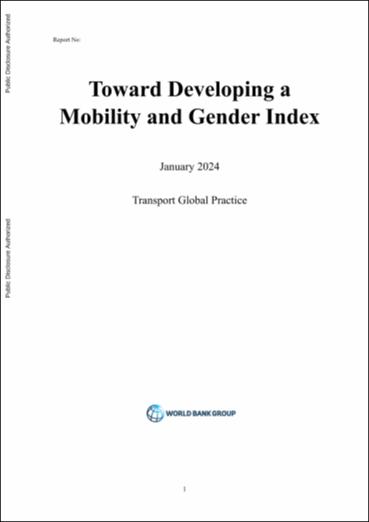Toward Developing a Mobility and Gender Index
January 25, 2024
Although the benefits of a gender-inclusive approach to mobility for transport decarbonization, access to jobs, and human capital advancement have been increasingly recognized globally, this topic has not received sufficient attention. The lack of attention to gendered mobility barriers is partly due to a limited understanding of the wider benefits of inclusive transport services for development, which is caused by the absence of sex-disaggregated mobility data highlighting gender inequalities. One of the obstacles to this gender-inclusive approach is the absence of a global gender indicator to track gender-based inequalities in mobility across countries and time. The lack of such an index: (i) hinders policymakers and development agencies from prioritizing this issue, setting project, program, and policy priorities, and monitoring performance, and (ii) discourages efforts to improve the quantity and quality of sex-disaggregated data related to mobility.
This paper summarizes the exploratory research conducted by the World Bank’s Transport Global Practice in 2022-23 to construct a mobility and gender index (MGI). The report presents a six-dimension theoretical framework, outlines data pre-processing and indicator selection procedures, and describes the technical steps taken to develop the measurement framework for the index. Various approaches for measuring gender gaps and levels are explored, with potential aggregation within dimensions and the presentation of scores. The report includes visualizations of some of the dimension scores as heatmaps and highlights key findings. Finally, it acknowledges data gaps and outlines the necessary next steps to develop the MGI.


